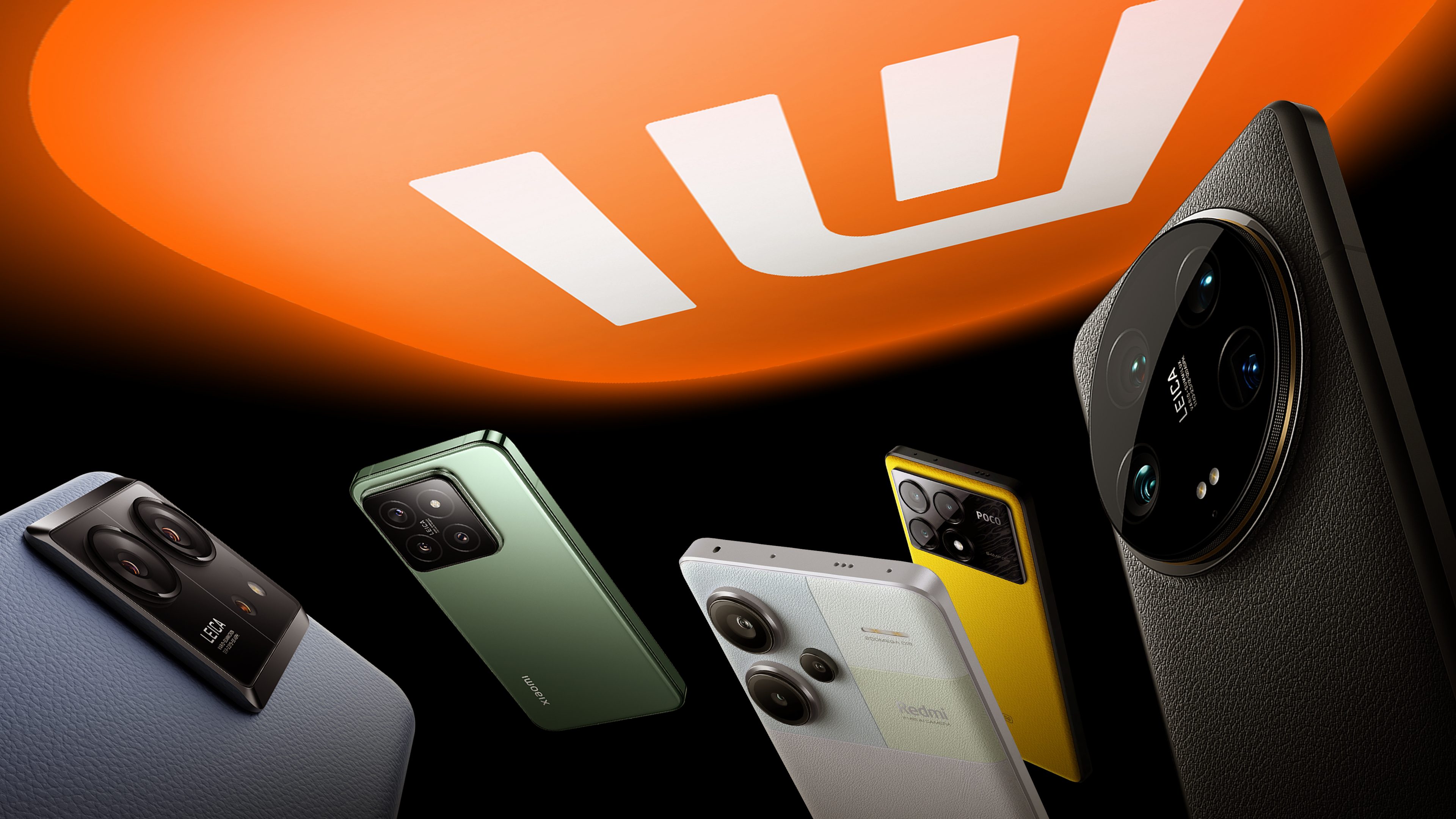
Xiaomi is known for releasing new smartphones frequently and also for having several sub-brands. Therefore, it can be quite challenging to find your way around the Xiaomi catalog. Based on our selection, nextpit will provide an overview of the different Xiaomi 14 models and Xiaomi 13T series, the Redmi Note 13 family, and the new Poco models.
Disclaimer: Xiaomi does not officially import its handsets to the United States. The prices, if mentioned in the article, are approximate conversions of the MSRP, and they may not reflect the market price in the US. All the affiliate links included are from third-party sellers and may not represent the actual MSRP. The devices may not include a warranty or support from your carrier.
The best Xiaomi, Redmi, and Poco smartphones in 2024
| Editor’s recommendation | Flagship camera | Flagship alternative | Price-to-performance winner | Price-to-performance alternative | Entry-level model | |
|---|---|---|---|---|---|---|
| Device | ||||||
| Image |  |
 |
 |
 |
 |
 |
| Rating |
Xiaomi 14 Review |
Xiaomi 14 Ultra Review |
Xiaomi 13T Pro Review |
Redmi Note 13 Pro+ 5G Review |
Poco X6 Pro Review |
Redmi Note 13 4G Review |
| Price (MSRP) |
|
|
||||
| Display |
|
|
|
|
|
|
| SoC |
|
|
|
|
||
| RAM | ||||||
| Memory |
|
|
|
|
|
|
| OS |
|
|
|
|
|
|
| Camera |
|
|
|
|
|
|
| Selfie camera | ||||||
| Battery |
|
|
|
|
|
|
| Connectivity |
|
|
|
|
|
|
| IP certification | ||||||
| Dimensions and weight |
|
|
|
|
|
|
| Offers* |
|
|
|
|
|
|
Recommended Xiaomi smartphones in 2024
The Xiaomi, Poco, and Redmi smartphones listed here cost anywhere between €200 to over €1,000. In addition to the new flagship models, we have also been able to review some of the newer Redmi and Poco models. The Poco X6 Pro listed in our table is the only one of our recommendations that we have yet been unable to review, but we do know it is on its way to the nextpit editorial team.
The best 2024 model: Xiaomi 14
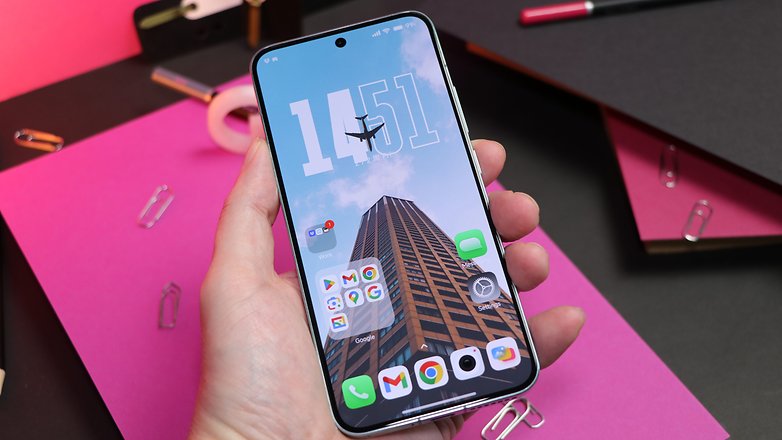
The Xiaomi 14 is our current king sitting on the Xiaomi throne. It may not be the most powerful model of the lot, but the combination of top-tier technology and price makes it perfect for an editorial recommendation.
Similar to all devices in the series, the latest Snapdragon 8 Gen 3 SoC is used here, and the Xiaomi 14 is also relatively compact thanks to its 6.36-inch display. You can combine the 12 GB RAM with either 256 or 512 GB of internal storage and pay just under €999 or €1,099.90, depending on the capacity.
Thanks to Xiaomi’s partnership with Leica, the Xiaomi 14 sports three 50 MP cameras at the back to make it a good camera phone. The IP68-certified device has a battery capacity of 4,610 mAh, with the 90 W charger included in the box.
HyperOS and the software updates have been improved to feature four major Android updates and five years of security updates, making the Xiaomi 14 a very successful flagship smartphone and our current champion on this list.
Good
- Excellent finish and ergonomics
- Snapdragon 8 Gen 3 chipset
- The main camera is amazing under all circumstances
- Solid battery life and fast charging speed
- 4 major Android updates & 5 years of security updates
Bad
- No major new features in HyperOS and plenty of bloatware
- Disappointing ultra-wide angle photo lens
- Still overheats a bit (when running benchmarks)


The ultimate camera flagship: Xiaomi 14 Ultra
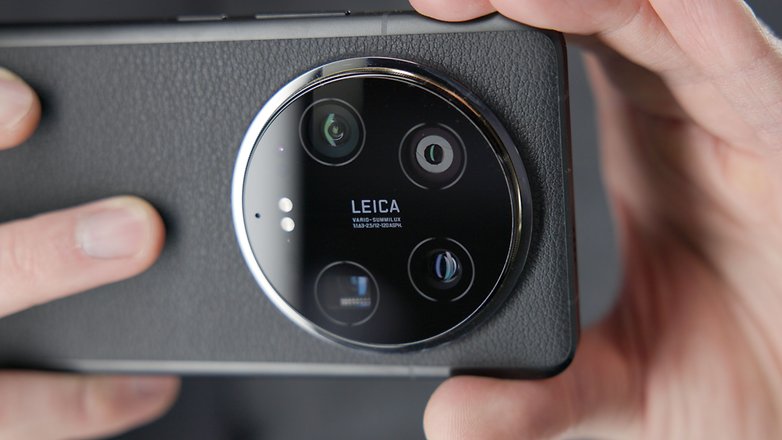
nextpit’s Xiaomi 14 Ultra review
Are you looking for an excellent camera smartphone regardless of the budget? The Xiaomi 14 Ultra confirms the leading position the Chinese brand has taken in the high-end smartphone market. With its elegant design, bright, well-calibrated screen, and high-quality photo module, the Xiaomi 14 Ultra can compete with Samsung and Apple flagships without blushing.
The performance of the Qualcomm Snapdragon 8 Gen 3-powered Xiaomi 14 Ultra is excellent, and its HyperOS interface, based on Android 14, offers intuitive multitasking and numerous customization options.
In terms of photo quality, the Xiaomi 14 Ultra stands out with its impressively high-quality quad-photo module, including a striking and ultra-efficient portrait mode, top colorimetry, exposure, and sharpness with the 1-inch Sony sensor. Also noteworthy is the highly effective zoom, even at 10x digital magnification.
Fast charging, both wired and wireless, is another strong point of this smartphone. With a price tag of 1,499.90 euros (approx $1600), the Xiaomi 14 Ultra is a worthy alternative to the Samsung and Apple flagships, if not a better choice in terms of photo quality.
Good
- Well-calibrated screen
- Outstanding photo quality
- Good battery life and really fast recharging
- 4 Android updates + 5 years of security updates
Bad
- HyperOS lacks innovation
- Temperature control not optimized
- Availability and price
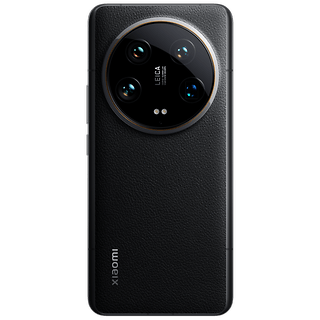

The high-end alternative 2024: Xiaomi 13T Pro

nextpit’s Xiaomi 13T Pro review
Now that the Xiaomi 14 series is available in Europe, the Xiaomi 13T Pro has been relegated to second place as our previous top recommendation. Nevertheless, it is still a very viable alternative, especially when you can pick it up for less than $700 now.
The 6.67-inch AMOLED display repeats pictures with a sporty 144 Hz. Xiaomi also relies on MediaTek instead of Qualcomm and uses the speedy MediaTek Dimensity 9200+, which you can combine with 12 or 16 GB and up to 1 TB of storage depending on the configuration.
For the first time, Xiaomi installed a Leica triple camera, which is convincing in most cases. A 5,000 mAh battery is also on board, which a) charges very quickly with 120 W and b) a charger is also included. MIUI 14 based on Android 13 is installed and—apart from annoying bloatware—is also convincing. By the way, Xiaomi has increased the software support to four years for system updates. Security updates will be provided for up to five years.
Based on the MSRP, the fun begins at €799, with even the largest version armed with 1 TB memory and 16 GB RAM will cost you “only” €999. Street prices are currently so low, you can find one for as little as $670.
Good
- Leica camera with great day and night shots
- 144 Hz display with natural color reproduction
- 120 W power supply included
- Improved update policy
- IP68 certified
Bad
- No LTPO technology
- No wireless charging


The best price-to-performance ratio: Redmi Note 13 Pro+ 5G
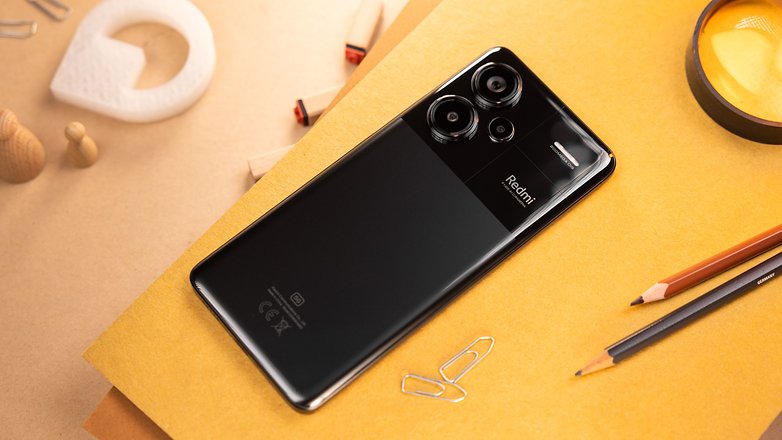
nextpit’s Redmi Note 13 Pro+ 5G review
We now leave the dizzying heights of the flagship territory and turn our attention to the mid-range, which is one of Xiaomi’s bread and butter. The new Redmi Note 13 family is very versatile and comes with the Redmi Note 13 Pro+ 5G sitting right at the top.
This device brings you a Dimensity 7200 Ultra SoC with a choice of either 8 or 12 GB RAM and 256 or 512 GB storage for less than $500. The 6.67-inch AMOLED panel features a refresh rate of 120 Hz and instead of HyperOS, you will get the MIUI 14 skin based on Android 13.
At least Xiaomi also equipped its Redmi smartphones with a better software update policy, which now stands at three major Android upgrades and four years of security updates. Out of the three cameras, the main camera is the one you are most likely to use, but the 200 MP shooter really comes up tops and makes the Pro Plus model in the series a really good all-rounder. The 5,000 mAh battery can be charged at speeds of up to 120 W using the included charger, which is also not something usual in this price range.
Good
- IP68 certified
- Dual SIM + eSIM
- Good workmanship
- Fast charging
- Strong main camera
- Solid update policy
- Very nice display
- Gorilla Glass Victus front and back
- Really good price-performance ratio
Bad
- The unavoidable 2 MP macro cam
- No 3.5 mm jack connection
- “Only” MIUI 14 instead of HyperOS
- No wireless charging
- Bucketloads of bloatware
- No microSD
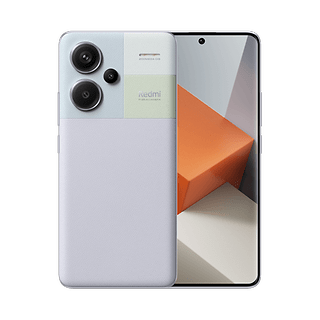

The price-to-performance alternative: Poco X6 Pro 5G
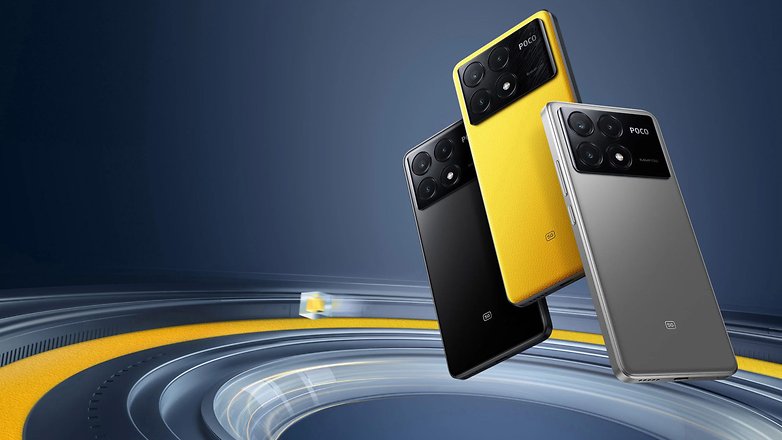
Check the full Poco X6 Pro review on nextpit
As an alternative to the Redmi Note 13 Pro+ 5G, we recommend the Poco FX6 Pro, which costs around $370. The design of the Poco X6 Pro is pleasing, with a 6.67-inch AMOLED screen and a photo module that protrudes only slightly. The screen is bright and offers a 120 Hz refresh rate. The smartphone’s interface is based on HyperOS, which is similar to MIUI.
In terms of performance, the Poco X6 Pro is very powerful thanks to its MediaTek Dimensity 8300 Ultra SoC. It comes with 8 or 12 GB of RAM and 256 or 512 GB of storage. The smartphone offers good battery life and fast 67W charging.
The Poco X6 Pro’s camera module is decent, with a 64 MP main lens that takes good daytime photos, but performs less well at night. The smartphone is also IP54-certified and offers 5G connectivity.
In conclusion, the Poco X6 Pro is a solid choice for those looking for good performance at an affordable price, despite a few compromises such as the lack of microSD card support or a 3.5mm jack.
Good
- Very good price-to-performance ratio
- Powerful processor
- Great display
- Already with HyperOS/Android 14
- Long software support
- Good battery life
Bad
- Camera system is only average
- Lots of bloatware
- No microSD support
- No 3.5 mm audio jack


The best budget model: Redmi Note 13 4G
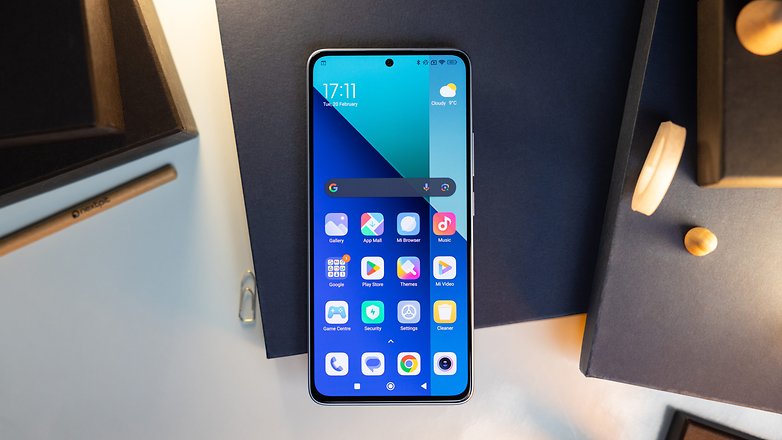
nextpit’s Redmi Note 13 4G review
120 Hz display with OLED technology and Full HD resolution? Just a few years ago, this was the domain of high-end smartphones, but you can now find it in the Redmi Note 13 4G. A smartphone that costs below $200? As for the rest of the specifications, it is powered by a Snapdragon 685 SoC, 6 GB RAM, and 128 GB storage, making it naturally fall behind the pecking order in the Redmi Note 13 family. However, at this price point, there is very little to complain about.
The storage space can at least be expanded using a microSD card and the triple camera configuration is led by a decent 108 MP shooter. The obligatory 5,000 mAh battery is charged at 33 W and the device is IP54-certified. Connectivity options include LTE, Wi-Fi 5, and Bluetooth 5.2, making it a negative point for the device. However, I feel the slightly older connectivity options are justified by its price.
As usual with Xiaomi, you also have to put up with a whole bunch of bloatware here. Hey, four years of security updates for the MIUI 14 phone sounds really good in exchange! If you’re looking for a really affordable smartphone and can live without 5G, be sure to check out offers for the Xiaomi Redmi Note 13 4G.
Good
- Bright and smooth OLED screen
- Four years of security updates
- Good battery life
- 33 W charger included
Bad
- Questionable secondary cameras
- Nineteen third-party apps by default


Between Xiaomi and Redmi: Which do you pick in 2024?
If we were to take Xiaomi and Redmi into consideration, we have to consider them as two distinct brands and two ranges within the same catalog. Yes, I know, it’s complicated, but basically, Xiaomi is slightly more premium overall than Redmi.
However, there are times when Redmi’s flagship range is sometimes more interesting than Xiaomi’s entry-level handsets. For example, the Redmi Note 11 Pro at $280 is more competitive than the Xiaomi Mi 11 Lite at $300. By the way, we asked you in our survey if you still feel comfortable with Xiaomi—and the answer was a big fat NO.
Flagships
Let’s start with Xiaomi’s flagship range. These are the top-of-the-range smartphones of the manufacturer with, generally, the most premium technical specifications. The flagship of the range is the Xiaomi 14 Ultra with its vanilla version, the Xiaomi 14. However, we expect to see more models make the cut here. Last year, the Xiaomi 13 family included the 13T while there were also Note models years ago, which we only find them limited to the Redmi range.
Mid-range handsets
If we take Xiaomi as the global scale brand, the manufacturer that is, Redmi constitutes the mid-range of its catalog, but if we consider Xiaomi and Redmi as two brands, Redmi also has its sub-ranges, from flagships to entry-level.
Redmi’s top-of-the-line model, which corresponds to Xiaomi’s mid-range Redmi Note models. They too, arrive in several numbered versions such as the Redmi Note 13 (4G and 5G options), Note 13 Pro (also available in 4G and 5G versions), and finally the Note 13 Pro+ 5G, from the basic to the most premium model.
Entry-level models
Next up are Redmi’s excellent entry-level models with devices such as the Redmi 13C or the Redmi A2. If you really want to spend very little money, you will always find something you are looking for here, with a decent selection starting at just $110 for the Redmi 9A.
The Poco catalog
Poco is a rather unusual sub-brand. The brand seems quite independent of Xiaomi compared to Redmi. Within the Poco catalog, you can again find further differences and classes based on a wide price range.
The Poco F models, like the Poco F4 GT, are the flagship models, being the most powerful and expensive smartphones from the manufacturer. The Poco X models like the Poco X6 Pro 5G, represent Poco’s mid-range price segment, with smartphones that place more emphasis on the quality of the screen and the camera. The Poco M and C series form Poco’s entry-level segment, with is priced at less than $200 sporting limited technical specifications, with battery life being the main focus.
Poco smartphones are less popular outside of Asia, though. You are more likely to find a Xiaomi or Redmi device in a store than a Poco device. On the other hand, Poco models are the Xiaomi models that usually see the biggest price drops over time.
How did we select the best Xiaomi smartphones?
For this selection, we chose the Xiaomi and Redmi smartphones with the best price-performance ratio in each price range. We based the prices on the recommended retail price. We also looked at the internal storage and RAM.
This list is of course subjective, as it is based on the preferences of the editorial team. Nevertheless, we try to take a number of purchase criteria into account and adapt them to the respective price range.
While I can forgive a budget-class Redmi for not having IP certification, this is less excusable for a high-end model. For the affordable smartphones, we paid more attention to performance and battery life, considering a more pragmatic approach that is usually taken with these models.
In the upper price segment, we pay more attention to realistically recommendable models that are not too expensive and have also considered the guarantee of software updates.
That’s it! These are the best Xiaomi phones as of March 2024! Please let me know in the comments which model you think is the best and which Xiaomi smartphone you own, if any.
This article was updated in April 2024 with numerous new models. Comments before the update have been kept.






